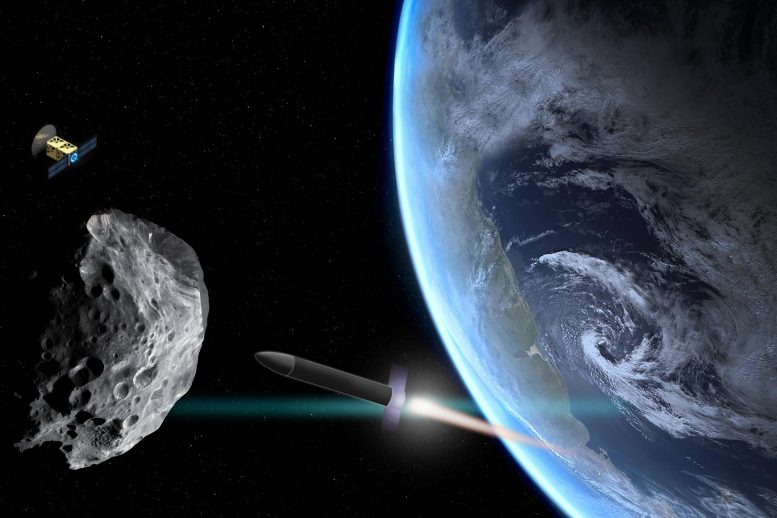
MIT researchers have devised a framework for deciding which type of mission would be most successful in deflecting an incoming asteroid, taking into account an asteroid’s mass and momentum, its proximity to a gravitational keyhole, and the amount of warning time that scientists have of an impending collision. Credit: Christine Daniloff, MIT
MIT engineers devise a decision map to identify the best mission type to deflect an incoming asteroid.
On April 13, 2029, an icy chunk of space rock, wider than the Eiffel Tower is tall, will streak by Earth at 30 kilometers per second, grazing the planet’s sphere of geostationary satellites. It will be the closest approach by one of the largest asteroids crossing Earth’s orbit in the next decade.
Observations of the asteroid, known as 99942 Apophis, for the Egyptian god of chaos, once suggested that its 2029 flyby would take it through a gravitational keyhole — a location in Earth’s gravity field that would tug the asteroid’s trajectory such that on its next flyby, in the year 2036, it would likely make a devastating impact.
Thankfully, more recent observations have confirmed that the asteroid will sling by Earth without incident in both 2029 and 2036. Nevertheless, most scientists believe it is never too early to consider strategies for deflecting an asteroid if one were ever on a crash course with our home planet.
Now MIT researchers have devised a framework for deciding which type of mission would be most successful in deflecting an incoming asteroid. Their decision method takes into account an asteroid’s mass and momentum, its proximity to a gravitational keyhole, and the amount of warning time that scientists have of an impending collision — all of which have degrees of uncertainty, which the researchers also factor in to identify the most successful mission for a given asteroid.
The researchers applied their method to Apophis, and Bennu, another near-Earth asteroid which is the target of OSIRIS-REx, an operational NASA mission that plans to return a sample of Bennu’s surface material to Earth in 2023. REXIS, an instrument designed and built by students at MIT, is also part of this mission and its task is to characterize the abundance of chemical elements at the surface.
In a paper appearing this month in the journal Acta Astronautica, the researchers use their decision map to lay out the type of mission that would likely have the most success in deflecting Apophis and Bennu, in various scenarios in which the asteroids may be headed toward a gravitational keyhole. They say the method could be used to design the optimal mission configuration and campaign to deflect a potentially hazardous near-Earth asteroid.
“People have mostly considered strategies of last-minute deflection, when the asteroid has already passed through a keyhole and is heading toward a collision with Earth,” says Sung Wook Paek, lead author of the study and a former graduate student in MIT’s Department of Aeronautics and Astronautics. “I’m interested in preventing keyhole passage well before Earth impact. It’s like a preemptive strike, with less mess.”
Paek’s co-authors at MIT are Olivier de Weck, Jeffrey Hoffman, Richard Binzel, and David Miller.
Deflecting a planet-killer
In 2007, NASA concluded in a report submitted to the U.S. Congress that in the event that an asteroid were headed toward Earth, the most effective way to deflect it would be to launch a nuclear bomb into space. The force of its detonation would blast the asteroid away, though the planet would then have to contend with any nuclear fallout. The use of nuclear weapons to mitigate asteroid impacts remains a controversial issue in the planetary defense community.
The second best option was to send up a “kinetic impactor” — a spacecraft, rocket, or other projectile that, if aimed at just the right direction, with adequate speed, should collide with the asteroid, transfer some fraction of its momentum, and veer it off course.
“The basic physics principle is sort of like playing billiards,” Paek explains.
For any kinetic impactor to be successful, however, de Weck, a professor of aeronautics and astronautics and engineering systems, says the properties of the asteroid, such as its mass, momentum, trajectory, and surface composition must be known “as precisely as possible.” That means that, in designing a deflection mission, scientists and mission managers need to take uncertainty into account.
“Does it matter if the probability of success of a mission is 99.9 percent or only 90 percent? When it comes to deflecting a potential planet-killer, you bet it does,” de Weck says. “Therefore we have to be smarter when we design missions as a function of the level of uncertainty. No one has looked at the problem this way before.”
Closing a keyhole
Paek and his colleagues developed a simulation code to identify the type of asteroid deflection mission that would have the best possibility of success, given an asteroid’s set of uncertain properties.
The missions they considered include a basic kinetic impactor, in which a projectile is shot into space to nudge an asteroid off course. Other variations involved sending a scout to first measure the asteroid to hone the specs of a projectile that would be sent up later, or sending two scouts, one to measure the asteroid and the other to push the asteroid slightly off course before a larger projectile is subsequently launched to make the asteroid miss Earth with near certainty.
The researchers fed into the simulation specific variables such as the asteroid’s mass, momentum, and trajectory, as well as the range of uncertainty in each of these variables. Most importantly, they factored in an asteroid’s proximity to a gravitational keyhole, as well as the amount of time scientists have before an asteroid passes through the keyhole.
“A keyhole is like a door — once it’s open, the asteroid will impact Earth soon after, with high probability,” Paek says.
The researchers tested their simulation on Apophis and Bennu, two of only a handful of asteroids for which the locations of their gravitational keyholes with respect to Earth are known. They simulated various distances between each asteroid and their respective keyhole, and also calculated for each distance a “safe harbor” region where an asteroid would have to be deflected so that it would avoid both an impact with Earth and passing through any other nearby keyhole.
They then evaluated which of the three main mission types would be most successful at deflecting the asteroid into a safe harbor, depending on the amount of time scientists have to prepare.
For instance, if Apophis will pass through a keyhole in five years or more, then there is enough time to send two scouts — one to measure the asteroid’s dimensions and the other to nudge it slightly off track as a test — before sending a main impactor. If keyhole passage occurs within two to five years, there may be time to send one scout to measure the asteroid and tune the parameters of a larger projectile before sending the impactor up to divert the asteroid. If Apophis passes through its keyhole within one Earth year or less, Paek says it may be too late.
“Even a main impactor may not be able to reach the asteroid within this timeframe,” Paek says.
Bennu is a similar case, although scientists know a bit more about its material composition, which means that it may not be necessary to send up investigatory scouts before launching a projectile.
With the team’s new simulation tool, Peak plans to estimate the success of other deflection missions in the future.
“Instead of changing the size of a projectile, we may be able to change the number of launches and send up multiple smaller spacecraft to collide with an asteroid, one by one. Or we could launch projectiles from the moon or use defunct satellites as kinetic impactors,” Paek says. “We’ve created a decision map which can help in prototyping a mission.”
This research was supported, in part, by NASA, Draper Laboratory, and the Samsung Foundation of Culture.

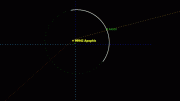

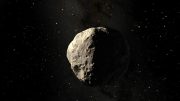
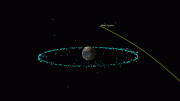

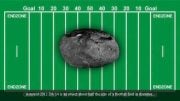
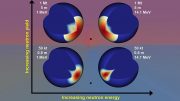

Man did it ever take a lot of brains to think of that !
WHEN THIS PRINCIPLE HAS BEEN AROUND FOR CENTURIES !
HOW DUMB DO YOU THINK WE ARE?
YOU MUST THINK COMMONSENSE PEOPLE ARE BRAIN DEAD
GET EDUCATED YOU MOUTH PIECE OF IGNORANCE !
wow.. decaf maybe?
The article is fluff. It needs to explain why this is difficult: That you are making VERY tiny changes to the speed of the asteroid. A 1 cubic km asteroid weighs about 3-7,000,000,000 tons Take a between number of 5 GT. A 1 ton impactor hitting at, say 5 km/sec = 5000m/sec will change the velocity of the asteroid by about 1 mm/s That’s 86 meters per day, or 31 km/year.
Sherwood
I think MIT can do better than that, yeah. Given an entire system, an impacter scheme is going to deliver orders of magnitude less momentum-altering energy per launch-mass than a carefully tailored nuclear blast.
[I’m not sure HOW comments actually manage to get posted, but I’m going to take another stab at it; I’m not trying to spam]
The best bang-for-the-buck still remains the nuclear option, but not simply rocketing to the things (in orbital-mechanics cheating style) directly and blowing them to bits. You would want a range of options for mass and time-window considerations, and you’d want them pre-parked in orbits ranging from 25,000 to 400,000 kms out.
Here’s one example to address the worst-case type: a 1 km blockbuster 1 year out.
1 gigaton behemoth (~10 times Russia’s ‘Tsar Bomba’) inside a 20 tonne water jacket, detonated on the surface of the best-convenient asteroid crater, if available. The idea is not simply to blow the body to smithereens but to a apply a reactive momentum orthogonal to the asteroid’s trajectory. The water is flash-vaporized as a sort of crude rocket propellant ‘exhaust’, greatly amplifying the bomb’s energy into useful kinetic energy. Space-X’s new booster scheme projects a vehicle some 4 times bigger than the biggest currently being tested, and would easily be able to transport the above system into the various orbits needed.
[That’s a sketch and I don’t have time to elaborate to address objections (scientific, engineering, and of course geopolitical).]
The strategy is scalable: smaller, more ‘nimble’ (and more numerous) instances for lighter masses a few months away. We already have the vehicles ready for those, and we already have the nukes. The safety issues are overblown: you launch the bare pits separately in the most reliable systems available, and you launch them inside a massively strong steel/ceramic-composite containment vessel that would survive a plunge through the Venusian atmosphere. The nuke is assembled way out in orbit, installed in the water-jacket, coupled with its missile propulsion system and boosted into asteroid-ready orbit by any of several current off-the-shelf rocket systems.
… but humans are braindead and having pre-parked nukes in orbit is just begging us to nuke ourselves.
Having > 13,000 nukes parked on the ground, thousands of them active, is even worse. Why not repurpose some of them (why not repurpose all of them?) in high orbit, even beyond the Moon? It’s not without reason I didn’t want to elaborate on geopolitical issues, some of which fall into the everything-is-scary category. That’s been done over and over again and it gets nowhere.
A 4 megaton nuke detonating on impact has a fireball 2 km in radius. Fireballs disintegrate ANYTHING into a plasma, no exceptions. This would turn a 2 km asteroid into a pretty looking aurora. For bigger rocks, the force of the shockwave traveling at 2000km/s would send the rest of the debris speeding on a very fast vector away form Earth. For one the size of the dinosaur killer, we could use bigger yield warheads or just pound at it with more nukes. A 30 megaton warhead creates a fireball 4.25 miles in radius. This is really not an issue people need to overly concerned about, we just need vigilance.
Well,I should go to JPL’s site and look at the numbers. I understand that Apophis has considerable mass and size. It has a host. Why not use what we’ve always used in the force of thrust and gravity to guide it’s trajectory? Move it away from the key hole!
Why would anyone concern themselves with a rock hurtling at us at 40,000mph that could end all life in minutes……. When the real concern and the only concern all our resources should be poured into….. is the sea level rising over the course of 100 years.
Ladies and getlemen, I have some good new and some bad news.. first the good news.
We have defated global warming. The Climate is no longer in danger… now the bad news.
A rock is heading straight for us and in about 3 days all life on the planet Earth will cease to exist